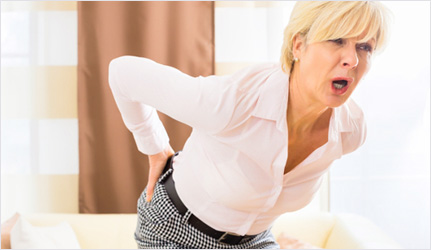
Osteoporosis is defined as reduction in bone strength leading to increased risk of fractures. Dexa scan will show B.D< 2.5 SD for healthy young adults of same sex & osteopenia when B.D is between -1.0 to -2.5 S.D. Life style factors like alcohol abuse, low calcium & vit D intake, inadequate physical exercise, smoking, post menopausal state, falls, family h/o fractures & drugs like chronic steroid use & abuse cause osteoporosis. Preventive strategies like calcium, vit D, sunlight exposure, bisphosphonates PTH & Denosumab.
Osteoporosis results from a loss of bone mass (measured as bone density) and from a change in bone structure. Many factors will raise your risk of developing osteoporosis and breaking a bone. You can change some of these risk factors, but not others. Recognizing your risk factors is important so you can take steps to prevent this condition or treat it before it becomes worse.
Major risk factors that you cannot change include:
1) Older age (starting in the mid-30s but more likely with advancing age)
2) Non-Hispanic white or Asian ethnic background
3) Small bone structure
4) Family history of osteoporosis or an osteoporosis-related fracture in a parent or sibling
5) Prior fracture due to a low-level injury, particularly after age 50

You can learn if you have osteoporosis by having a simple test that measures bone mineral density-sometimes called BMD. BMD -the amount of bone you have in a given area-is measured at different parts of your body. Often the measurements are at your spine and your hip, including a part of the hip called the femoral neck, at the top of the thighbone (femur). Dual energy X-ray absorptiometry (referred to as DXA or DEXA and pronounced "dex-uh") is the best current test to measure BMD.
The test is quick and painless. It is similar to an X-ray, but uses much less radiation. Even so, pregnant women should not have this test, to avoid any risk of harming the fetus. DXA test results are scored compared with the BMD of young, healthy people. This results in a measure called a T-score.
The risk of fracture most often is lower in people with osteopenia than those with osteoporosis. But, if bone loss continues, the risk of fracture increases.
